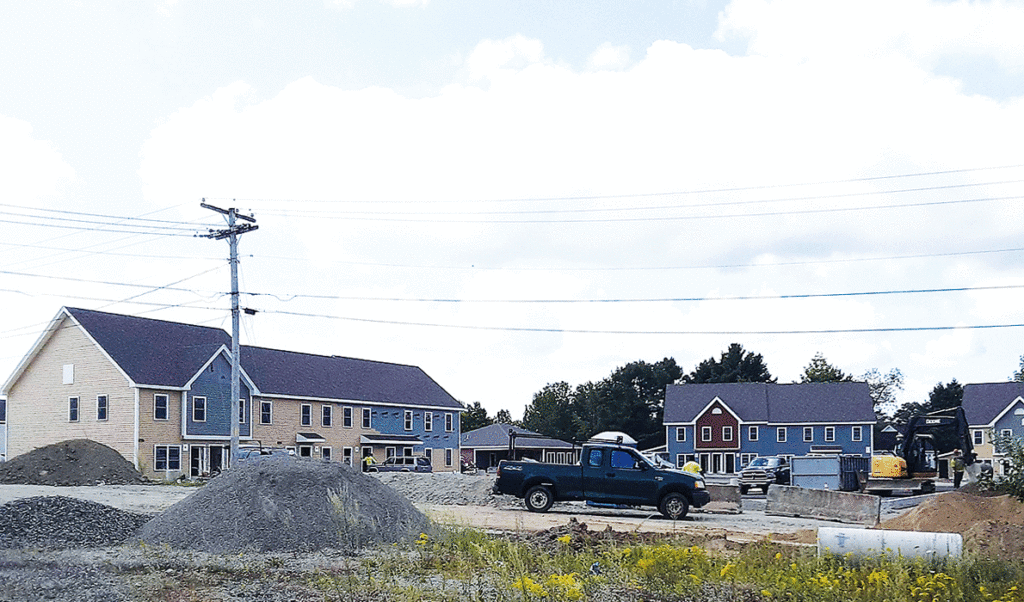By Laurie Schreiber
Ellsworth is experiencing a surge of development propelled both by the city and commercial interests.
The Jackson Laboratory recently opened its new mouse production facility in a former Lowe’s building that was repurposed with state-of-the-art infrastructure and technology. Attracted in part by the promise of several hundred employees at the new facility, plus significant pent-up demand, private developers have embarked on new housing projects.
Downtown historic buildings are seeing an influx of ground-floor commercial enterprise and upper-story renovations for residential use.
In turn, the city has been overseeing revitalization projects. That includes the establishment of a three-mile, high-speed broadband network in the business district and the opening of a business incubator, the Union River Center for Innovation, for technology and biotechnology start-ups.
Now the city is beginning work on a waterfront development plan, designed to connect the city’s popular Harbor Park and Marina and the downtown with pedestrian-friendly walkways.
“The park is heavily used for concerts and special events, and a lot of people hang out there,” said City Manager David Cole. “It’s a popular site.”
The park’s footprint was expanded substantially, several years ago, when an old wastewater treatment plant there was decommissioned. The park has existing walkways. Now the city is looking at extending those through to Water Street, along the Union River, as a first step to connecting to the downtown, Cole said. The city will seek state recreational trail grants this fall to accomplish that, he said.
“It’s a beautiful asset,” he said of the park and marina.
This year, the city invested $90,000 into replacing pilings that were either substandard or had failed. And the city received a Maine Department of Transportation Small Harbor Improvement Program grant to replace the marina’s current fuel service and add diesel, so that boaters will be able to choose between gas and diesel fuel, he said.
“We’re focusing our development efforts on the urban core of the city because that’s where the infrastructure is,” said Cole, who noted that some of the new housing projects are within that core, as well as recreational assets in the downtown and the harbor. Ellsworth is also a terminus of the 87-mile Down East Sunrise Trail.
“We have some great recreational assets and we want to have the sidewalks and trails and green space that connect with the housing and commerce and entertainment,” said Cole. “We’ve got new restaurants and stores downtown. There’s a lot of activity, and fewer and fewer empty spots. There are people who are renovating and putting in new apartments in some of the upper stories downtown.”
Two years ago, Cole noted, the city alerted local and statewide developers to Ellsworth’s opportunities for housing projects due to the housing shortage. Those contacts are paying off, with projects like a six-unit townhouse project off Main Street, near downtown activities.
Portland’s Developers Collaborative is building one of Ellsworth’s largest housing projects, called Oriole Way, with 50 workforce housing units between the Route 1 shopping district and Water Street. Another 24 luxury apartments are going up in a project called Washington Luxe nearby, with a view of the harbor.
“Bringing it all together and looking at things like bus service, walkability, green space, the river, and the waterfront are key assets in the plan,” he said. “What it comes down to is, we want Ellsworth to be a community of choice to live, work, and do business. If you’re going to be the community of choice, you’ve got to have the jobs and the services and the recreation and other things that add to your quality of life. So we’re looking at it as a whole package.”





